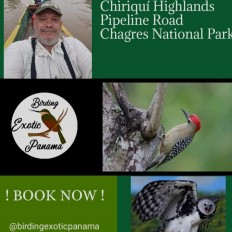Top species
List up to ca. 25 species that:
• have a limited distribution range and/or are rare on a global level
• are most sought-after by birdwatchers at this site
• and are relatively easy to see at this site (year-round or seasonally)
| Gray-headed Dove (Leptotila plumbeiceps) | |
| Scarlet Macaw (Ara macao) | |
| Coiba Spinetail (Cranioleuca dissita) |
Scarlet Macaw (Ara macao) was added by Venicio Wilson (2021-09-21 04:10:59)
Gray-headed Dove (Leptotila plumbeiceps) was added by Venicio Wilson (2021-09-21 04:10:39)
Coiba Spinetail (Cranioleuca dissita) was added by Venicio Wilson (2021-09-21 04:10:21)


